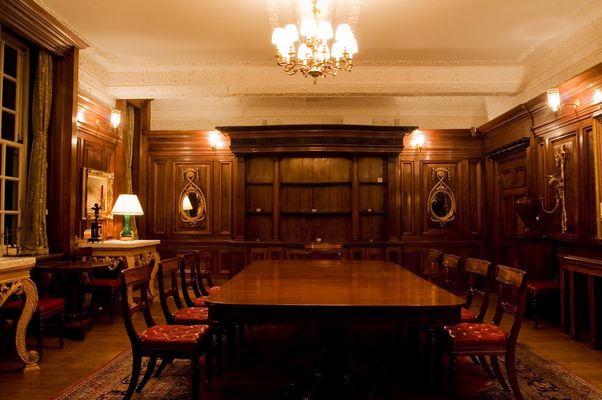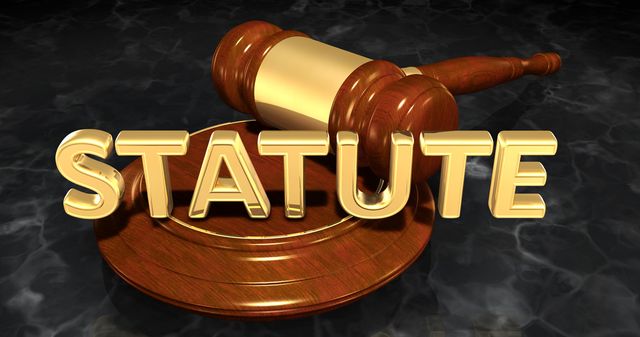2.1.1
Edward VI, Somerset & Northumberland
Edward VI - Early Life
Edward VI - Early Life
Edward VI ascended to the throne when he was nine years old. Because he was too young to rule, England was led by a Regency Council.


Edward VI's education
Edward VI's education
- Edward VI was very intelligent and received an excellent education.
- Alongside this education, Edward VI was a keen sportsman. He particularly enjoyed horse riding.


Edward VI's role in government
Edward VI's role in government
- It is difficult to tell how much influence Edward VI had in governing the kingdom.
- Although Edward VI was young, some historians have argued that he began to have considerable influence in the later years of his reign.
- Edward VI appeared to take a keen interest in the shape of England's religious settlement.


Sickly and weak?
Sickly and weak?
- Edward VI has often been remembered as a weak and sickly young boy.
- But this image is not altogether true.
- Edward VI was healthy for the majority of his childhood.
- He died of a serious chest affliction in 1553.
Duke of Somerset - Edward Seymour
Duke of Somerset - Edward Seymour
The Duke of Somerset was Edward VI's uncle, Edward Seymour. Somerset became in charge of the Regency Council and ruled England for two years.


Somerset's relationship with Edward VI
Somerset's relationship with Edward VI
- The Duke of Somerset was strict with Edward VI.
- The boy had no direct involvement in government and limited pocket money but a thorough education.


The Lord Protector
The Lord Protector
- The reformist faction was in the strongest position when Henry VIII died.
- Somerset was popular in 1547 after his victories against Scotland. Soon after Henry’s death, the Regency Council gave its power to Somerset.
- Somerset rapidly took control of Edward and made himself Lord Protector.


Somerset's Regency Council
Somerset's Regency Council
- Somerset rapidly promoted his own supporters to the Regency Council.
- Somerset’s supporters included: Thomas Seymour; John Dudley, Earl of Warwick; Archbishop of Canterbury Cranmer; Sir William Paget; Sir Thomas Wriothesley; and the Earl of Arundel.
- The Regency Council met in Somerset’s home, Somerset House. So he was able to control who had contact with his government. His retainers guarded him.


How Somerset ruled
How Somerset ruled
- Somerset ruled England using the dry stamp and royal proclamations.
- In Henry VIII’s last years, the dry stamp had been used a great deal, so this was not a sudden change.
- The 1539 Proclamations Act said proclamations had equal force as statute law.


Somerset's religious policy
Somerset's religious policy
- Somerset had a tricky balancing act to please reformists and traditionalists, Protestants and Catholics.
- The Book of Common Prayer and the Act of Uniformity of 1549 were vague in the hope of being all things to all worshippers.
- Some key Protestant steps were taken:
- Dissolving chantries (financial need).
- Acting against ornaments and images (Protestant pressure in London).
- Clergy were again allowed to marry (enabling more Protestant clergy).


Somerset's downfall
Somerset's downfall
- Somerset's downfall was largely due to his failure to deal with the 1549 rebellion (Kett's Rebellion).
- Somerset had also alienated many in the Regency Council.
- Somerset's foreign policy was costly and ineffective.
- Somerset's power declined following 1549, with the duke of Northumberland gaining power and influence in his place.
- By 1552, Somerset was arrested, tried for treason and executed.
Duke of Northumberland - John Dudley
Duke of Northumberland - John Dudley
In 1550, John Dudley became the Lord President of the Privy Council. In 1551, he became Duke of Northumberland. He was the most important figure in England until Edward VI's death in 1553.


Religious policies
Religious policies
- Northumberland took religion in a much more Protestant direction.
- January 1552: Treason Act - Questioning either the Royal Supremacy and the beliefs of the English Church became an offence.
- January 1552: Second Act of Uniformity - Attendance at Church of England services became compulsory.
- 1552 Prayer Book - All traces of Catholicism and the Catholic mass removed, including transubstantiation (a core Catholic belief about Holy Communion).


Was Northumberland a hypocrite?
Was Northumberland a hypocrite?
- Northumberland used Catholic / conservative support to become Lord President of the Privy Council. Those men then lost their positions.
- Northumberland oversaw Protestant changes though confessing himself to be Catholic on the scaffold.
- Northumberland was governing in the name of Edward VI, who was a strong Protestant. Northumberland was being a good servant.


Financial policies
Financial policies
- Arguably, Northumberland’s most important priority was to stabilise England after the turmoil of Somerset’s rule.
- Northumberland tried to pay off England's debts. This was through selling off chantry lands (owned by priests before the Henrician Reformation).
- Ending debasement.
- Increasing Crown revenue through trade expansion and raising customs duties.
1Consolidation of the Tudor Dynasty 1485-1547
1.1Henry VII 1485-1509
1.1.1Henry VII's Consolidation of Power
1.1.2Henry VII & Succession
1.1.3Henry VII's Councils & Parliament
1.1.4End of Topic Test - Henry VII Part 1
1.1.5Henry VII & Justice, Finance & Policies
1.1.6Henry VII's Relationship with Foreign Powers
1.1.7Henry VII & Society
1.1.8End of Topic Test - Henry VII Part 2
1.1.9Henry VII & Regional Issues
1.1.10Henry VII & Economic Development
1.1.11Henry VII & Cultural Development
1.1.12End of Topic Test - Henry VII Part 3
1.2Henry VIII 1509-1547
1.2.1Henry VIII's Consolidation of Power
1.2.2Henry VIII & His Government
1.2.3Henry VIII & His Government 2
1.2.4End of Topic Test - Henry VIII Part 1
1.2.5Henry VIII & Succession
1.2.6Henry VIII's Relationship with Foreign Powers
1.2.7Henry VIII & Society
1.2.8End of Topic Test -Henry VIII Part 2
1.2.9Henry VIII & Society 2
1.2.10Henry VIII & Economic Development
1.2.11Henry VIII & Religion
1.2.12End of Topic Test - Henry VIII Part 3
2England: Turmoil & Triumph 1547-1603
2.1Instability & Consolidation 1547-1563
2.1.1Edward VI, Somerset & Northumberland
2.1.2Edward VI & Authority
2.1.3Edward VI & Relations with Foreign Powers
2.1.4End of Topic Test - Edward VI Part 1
2.1.5Edward VI & Rebellions
2.1.6Social Impact of Religious & Economic Changes
2.1.7Edward VI & Cultural Developments
2.1.8End of Topic Test - Edward VI Part 2
2.1.9Mary I & Her Rule
2.1.10Mary I & Relations with Foreign Powers
2.1.11The Social Impact of Religious & Economic Change
2.1.12End of Topic Test - Mary Part 1
2.1.13Elizabeth I & Her Rule
2.1.14Elizabeth I & Relations With Foreign Powers
2.1.15Impact of Economic, Social & Religious Change
2.1.16End of Topic Test - Elizabeth I Part 1
2.2The Triumph of Elizabeth 1563-1603
2.2.1Elizabeth I & Court
2.2.2Elizabeth & Government
2.2.3Elizabeth I & Succession
2.2.4End of Topic Test - Elizabeth I Part 2
2.2.5Mary Queen of Scots
2.2.6Relations with Spain
2.2.7End of Topic Test - Elizabeth I Part 3
2.2.8Elizabeth I & Society
2.2.9Elizabeth I & Rebellion
2.2.10Elizabeth & Economic Development
2.2.11End of Topic Test - Elizabeth I Part 4
2.2.12Elizabeth I & Religious Developments
2.2.13The English Renaissance
2.2.14Elizabeth's Last Years
2.2.15End of Topic Test - Elizabeth I Part 5
Jump to other topics
1Consolidation of the Tudor Dynasty 1485-1547
1.1Henry VII 1485-1509
1.1.1Henry VII's Consolidation of Power
1.1.2Henry VII & Succession
1.1.3Henry VII's Councils & Parliament
1.1.4End of Topic Test - Henry VII Part 1
1.1.5Henry VII & Justice, Finance & Policies
1.1.6Henry VII's Relationship with Foreign Powers
1.1.7Henry VII & Society
1.1.8End of Topic Test - Henry VII Part 2
1.1.9Henry VII & Regional Issues
1.1.10Henry VII & Economic Development
1.1.11Henry VII & Cultural Development
1.1.12End of Topic Test - Henry VII Part 3
1.2Henry VIII 1509-1547
1.2.1Henry VIII's Consolidation of Power
1.2.2Henry VIII & His Government
1.2.3Henry VIII & His Government 2
1.2.4End of Topic Test - Henry VIII Part 1
1.2.5Henry VIII & Succession
1.2.6Henry VIII's Relationship with Foreign Powers
1.2.7Henry VIII & Society
1.2.8End of Topic Test -Henry VIII Part 2
1.2.9Henry VIII & Society 2
1.2.10Henry VIII & Economic Development
1.2.11Henry VIII & Religion
1.2.12End of Topic Test - Henry VIII Part 3
2England: Turmoil & Triumph 1547-1603
2.1Instability & Consolidation 1547-1563
2.1.1Edward VI, Somerset & Northumberland
2.1.2Edward VI & Authority
2.1.3Edward VI & Relations with Foreign Powers
2.1.4End of Topic Test - Edward VI Part 1
2.1.5Edward VI & Rebellions
2.1.6Social Impact of Religious & Economic Changes
2.1.7Edward VI & Cultural Developments
2.1.8End of Topic Test - Edward VI Part 2
2.1.9Mary I & Her Rule
2.1.10Mary I & Relations with Foreign Powers
2.1.11The Social Impact of Religious & Economic Change
2.1.12End of Topic Test - Mary Part 1
2.1.13Elizabeth I & Her Rule
2.1.14Elizabeth I & Relations With Foreign Powers
2.1.15Impact of Economic, Social & Religious Change
2.1.16End of Topic Test - Elizabeth I Part 1
2.2The Triumph of Elizabeth 1563-1603
2.2.1Elizabeth I & Court
2.2.2Elizabeth & Government
2.2.3Elizabeth I & Succession
2.2.4End of Topic Test - Elizabeth I Part 2
2.2.5Mary Queen of Scots
2.2.6Relations with Spain
2.2.7End of Topic Test - Elizabeth I Part 3
2.2.8Elizabeth I & Society
2.2.9Elizabeth I & Rebellion
2.2.10Elizabeth & Economic Development
2.2.11End of Topic Test - Elizabeth I Part 4
2.2.12Elizabeth I & Religious Developments
2.2.13The English Renaissance
2.2.14Elizabeth's Last Years
2.2.15End of Topic Test - Elizabeth I Part 5
Unlock your full potential with Seneca Premium
Unlimited access to 10,000+ open-ended exam questions
Mini-mock exams based on your study history
Unlock 800+ premium courses & e-books